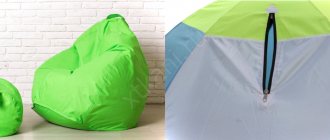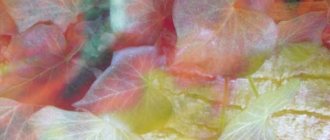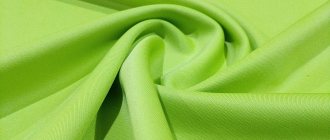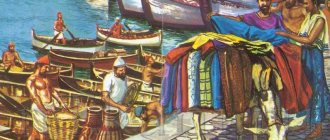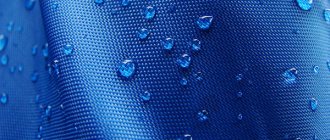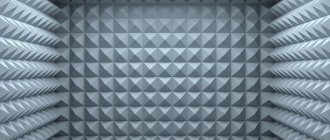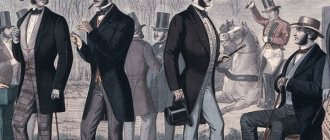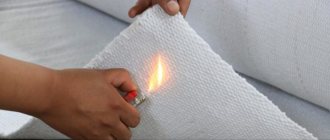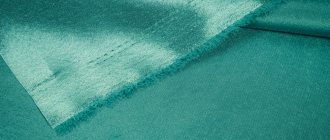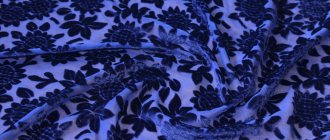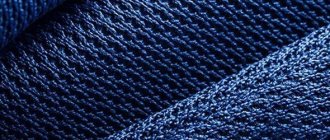Pants are a thing that is now worn equally by both men and women. Pants can be an element of a suit or an independent item of clothing. The design of the trousers requires that the fabric from which they are made drapes well and holds its shape.
The performance characteristics of trouser fabrics require that they do not wrinkle, fray, or pill. What materials are the most popular and in demand in the manufacture of trousers? This is discussed in the article. Let's get acquainted with the list of fabrics, their properties and care rules.
Linen trousers
Linen trousers are lightweight and comfortable. The fabric for their production is made from fibers of the fiber flax plant. Flax processing technologies make it possible to produce threads of different thicknesses. To sew summer clothes, including linen pants, combed flax is used; this yarn has a very small fiber diameter.
To make business suits, flax threads from tow (short fiber) are used; this fabric is denser.
Properties of linen fabric:
- naturalness and environmental friendliness of the material;
- strength and durability;
- breathability;
- high thermal conductivity;
- cannot be electrified;
- has bactericidal properties (contains silica, which inhibits the development of bacteria);
- does not require special delicate care.
Classifications of fabrics for trousers
There are many types of fabrics for sewing trousers. The canvases are very heterogeneous. They are usually divided into groups according to several criteria:
- By fiber composition
If you plan to sew business-style clothes, use:- woolen;
half-woolen;
- cotton;
- linen;
- synthetic.
- According to the structure of yarn and threads
This is one of the signs that is responsible for the appearance and quality characteristics of the fabric:- twisted;
shaped;
- textured;
- melange.
- By color
The palette of color shades is very diverse. Highlight:- bleached;
variegated;
- plain-colored;
- with printed prints.
- According to the fabric structure
A wide variety of weaving types are used in production. Finely patterned ones have gained the most popularity. - By purpose for men or women
Pure wool or wool blend fabrics are preferred for sewing men's suits. Women's clothing involves the use of softer, lighter, more delicate types of fabrics. It is customary to sew children's clothes from different types of fabrics, with priority given to practicality and durability, ensuring longer wear. - By season
Which fabric to choose for trousers largely depends on the time of year. Cloths for winter are thicker. Their purpose is to preserve heat. Summer ones are light, hygroscopic, airy. - By purpose
Costumes must be chosen correctly, according to the circumstances. You cannot wear the same outfit to events of different status and importance. Some imply a dress code, which imposes obligations regarding appearance. Therefore, costumes are divided into several types:- everyday;
festive (elegant);
- uniforms;
- special.
- By thread thickness
Thread thickness is designated by a special index SUPER and is measured in microns. This index characterizes the quality of thread for classic suiting fabric.
When choosing fabric for trousers, the names (that is, the composition), the structure, and the pattern are taken into account. Fabrics can also have a more pronounced decorative effect, for example in the form of convex patterns or contrasting colors.
- Super 100-110 - business suits for every day, travel suits, trousers. Good, uniform quality wool of moderate density, weight per linear meter ranges from 280 to 390 grams. The fiber thickness for the yarn is, on average, 18 microns. This material is resistant to creasing and abrasion. Suits made from this fabric are convenient, reliable and comfortable. Any item made from such material will last a long time.
- SUPER 120-130 - men's business class suit. These fabrics use finer fibers. It is recommended to wear items made from these fabrics not every day, allowing them to rest on a hanger for at least three days.
- SUPER 140-160 - men's weekend suit. A suit made from this fabric is light and airy, well suited for hot weather. The weight of a linear meter of such fabric ranges from 240 to 270 grams. The yarn fiber diameter will average 16 microns. This fabric restores its shape much better after use of the product.
- SUPER 180-250 - fabrics for individual tailoring. Used for the production of elite men's suits, suits for ceremonies, and tailcoats.
Features of caring for linen fabric
Plain (fabric is not dyed) linen trousers are sewn in a machine on the “cotton” mode at a water temperature of up to 90 degrees. In cases of severe contamination, boiling of the product is permitted. Colored linen fabric is washed at 40 degrees. The detergent is used for this type of fabric; it should not contain bleaching components. Preparations containing chlorine have a destructive effect on tissue.
After washing, rinse in several waters - warm and then cold. Linen trousers are dried hanging on a line; it is advisable to do this in the fresh air, but not under the influence of direct rays of the sun. When removing dry linen clothes from the rope, you must immediately fold them carefully, so the fabric will not wrinkle .
Iron linen trousers with a hot iron on a special setting. The fabric will smooth out better if you moisten it with a spray bottle or place wet gauze on it.
Benefits of natural fabrics for trousers
There is an opinion that natural fabrics are preferable to synthetics. They are more comfortable to wear and allow more air to pass through. However, in some situations, synthetic materials are much more convenient. Why this happens, how best to select the material for your case, we will consider below.
The advantages of natural fabrics are that they fit well, are safe, and allow moisture and air to pass through. For suits, wool or linen materials, as well as mixtures based on them, are used. The popularity is justified by the historical roots of this type of clothing, convenience and comfort. Wool fabric is more suitable for winter suits. Wool trousers keep you warm, look solid, and allow moisture to pass through the air. Linen is an ideal material for summer suits.
But there are also disadvantages . Suits made from natural fabrics are difficult to wash. They may lose shape, bend or shrink. Creases, abrasions, and bruises become noticeable very quickly.
Viscose trousers
Viscose clothing occupies a large percentage of the consumer market. This material is not expensive, but has high performance qualities. Viscose trousers are comfortable to wear, pleasant to the body, and wear-resistant.
Viscose is made from natural raw materials – wood cellulose. It is crushed into chips and boiled in an alkali solution. The resulting mass is pressed into sheets similar to cardboard, and fiber and threads are produced from them.
Properties of viscose fabric:
- soft;
- pleasant to the touch;
- drapes well in folds;
- absorbs moisture;
- the fabric “breathes”;
- warms well;
- does not wrinkle;
- does not cause allergic reactions on the skin;
- washes well;
- Does not fade even after many washes.
conclusions
There are a huge number of wrinkle-resistant fabrics. There are natural, synthetic, blended options, as well as a unique variety of reaper fabric, which made the list due to the fact that it does not need to be ironed.
Wrinkle-resistant fabrics are very practical, and at the same time they have a lot of other positive properties - from hygroscopicity to color fastness, and also have a wide range of applications. Materials that are resistant to deformation are used for sewing bed linen, casual clothing and specialized suits.
Features of caring for viscose fabric
Viscose belongs to the category of delicate fabrics; caring for it is not difficult, but requires care. Wash viscose trousers using the machine’s “hand wash” and “delicate wash” modes. Use gentle detergents without chlorine components. Spinning for viscose is not recommended . After washing and rinsing, the item is wrapped in a towel. When the water is absorbed, it is laid out horizontally on a table covered with a dry sheet. Periodically, the trousers are turned over. You can iron viscose fabric with a warm iron through gauze.
Cutting large trousers
It must be emphasized that when cutting pants, a problem often arises when you want to turn the template to the side, and then the patterns will fit well on the material at the same length. You can’t do this, it’s better to buy a little more material and lay out the patterns correctly.
Large trousers
And you need to do this so that the lines dividing the legs in half are located only along the grain of the fabric.
In conclusion, it should be noted that trouser fabric can be varied; when choosing, you need to take into account the scope of their use. They can be intended both for everyday life and for sports or active recreation. It is necessary to take into account the characteristics of the skin and allergic reactions to different tissues.
Silk trousers
Their silk trousers look very elegant. Silk men's suits are particularly elegant. In a woman's wardrobe, trousers made from this type of fabric can be both an element of an evening outfit and a casual one. They add femininity and luxury to the look.
Silk can be natural or synthetic. Natural silk is made from silkworm cocoons. A silk thread consists of twisted fibers in the amount of 5-8 pieces, their diameter is very small, so the silk thread is light and thin. There are many varieties of silk fabric, they differ in the way they are weaved: satin, satin, chiffon, crepe, gauze, organza.
Properties of silk fabric:
- shine;
- smoothness;
- good density;
- wrinkles slightly;
- easy to drape;
- cools the body in hot weather;
- washes well;
- soft to the touch and pleasant to the body.
Types of trouser fabrics and their characteristics
Wool tweed
This is a material with a textured surface and medium drape. The fabric retains folds well. The material is a little plump, so it is not suitable for people of large build. When sewing trousers, you need to refrain from excessive ironing so that the clothes retain their original shine. It is better to treat pin marks and folds with steam; it is recommended to use a lining.
Advantages of the fabric:
- soft and elastic;
- application in sewing demi-season clothing;
- water-repellent properties;
- good heat saving.
Wool tweed has a diagonal weave. It is made with colored knots and can be melange or mulled.
Artificial gabardine
It is a soft and lightweight fabric obtained from a tight twill weave of threads. The material lends itself well to draping and does not add volume to the body, but folds may not be preserved. Steam can remove creases and pin marks. After ironing, give the material time to dry so that the fabric does not stretch. The use of a lining is optional.
Wool gabardine
The fabric is obtained by tightly weaving threads. The surface has a rough texture, good dimensional stability and wrinkle retention. Wool gabardine adds visual volume and provides excellent warmth, which is why it is actively used in sewing winter trousers. When working with the material, you do not need to iron it too hard, otherwise the material will begin to shine. Alternatively, use steam to remove folds and pin marks.
Wool crepe
Material with a grainy surface. Its features are:
- lends itself well to draping;
- holds the fold;
- dimensional stability - average;
- lining recommended.
When working with crepe, decating is required to prevent the trousers from shrinking. Sections must be secured immediately to avoid fabric fraying. Use steam to remove creases and pin marks.
Linen suit fabric
This material makes light and comfortable trousers. They are a little plump, but drape well. Disadvantages of the fabric include wrinkleability and inability to hold a fold. The fabric may crumble, so before sewing you need to process the sections of the parts, and also remove pin marks using steam.
The advantages of linen fabric are:
- not electrified;
- high thermal conductivity;
- environmental cleanliness;
- It does not require special care.
Wool jersey, cotton knitwear
A significant advantage of the materials is their natural composition and good drape. When worn, these trousers wrinkle and do not hold the folds. When sewing, it is better to use braid to strengthen the middle seam to avoid stretching the fabric. The lining is installed only on the knees.
Cotton twill, denim, poplin
This is a durable group of cotton fabrics. In terms of ease of drapery, the materials are rated as average. In addition, they can add volume, have poor dimensional stability and the ability to retain folds. For greater softness, decatification is carried out.
Viscose
This is a universal fabric from which you can sew trousers of any style. The material is delicate. Its advantages are:
- excellent dimensional stability;
- good drapability in folds;
- easy care;
- softness;
- maintaining the original color after many washes.
For greater density, viscose is combined with silk or polyester.
Velveteen
The texture of the material resembles velvet. It has good elasticity and dimensional stability, is not subject to deformation, and after washing practically does not shrink. The fabric requires special care, so it is best to clean dry. If heavily soiled, you can wash it on a delicate cycle.
Silk
This is a delicate fabric, which may include synthetic and natural threads. The finished product has a shiny and smooth surface. Suits and trousers are light and thin, which guarantees comfort in the sultry heat. Silk clothing drapes easily, but wrinkles a lot. Therefore, silk threads are combined with viscose.
Tips for choosing fabric for different trouser styles
Casual pants
- Classic. Tweed is considered the best solution for classic styles. It will warm you in cold weather, retains heat well and resists moisture;
- Winter. For the cold season, woolen fabric is suitable. It has good heat-saving properties and holds its shape well;
- Summer. In the warm season, cotton and linen are appropriate. It has hygroscopic properties and allows the body to breathe;
- Universal. Denim is relevant for all seasons. Thanks to the dense texture and rich palette of colors, you can sew trousers of different models to suit any figure.
Weekend trousers
When selecting fabric for evening styles, you need to prioritize aesthetic appeal rather than practicality. The following materials are suitable for going out clothes:
- Mohair. On a cold evening, the best solution would be pants made from Angora goat fur. They are soft and create a beautiful enveloping shape;
- Silk. An elegant material that allows you to create a flowing silhouette. Silk trousers are attractive and suitable only for evening events, since the material wrinkles easily and is easy to care for;
- Viscose. A universal solution for everyday wear and special occasions. The material is pleasant to the touch, does not wrinkle and is attractive.
To purchase trouser fabric in bulk, contact the Vulcan-A company. We offer a wide range of materials for sewing men's and women's clothing of various styles. All products are certified by an independent laboratory.
Return to blog
Features of caring for silk fabric
Silk is a delicate fabric and requires careful care and wear. Wash silk items in warm water (no higher than 30 degrees) using special products for this type of material. The machine wash mode is “hand wash”, “delicate wash”, “silk”. Squeezing in a machine is not recommended. Washing by hand is carried out with light kneading movements; you cannot rub or crumple the product, as this will deteriorate the structure of the silk fabric.
To make the silk shine, add a little table vinegar to the last rinse water. Silk trousers should be dried by laying them flat on a towel away from direct sunlight. Iron this type of fabric from the wrong side using a special mode. Stains from water and other liquids remain on silk; it is advisable to wash them immediately after they appear. It is undesirable to use stain removers in silk care; they destroy the structure of the fabric and can lighten the material .
Synthetic materials
To sew clothes that will not wrinkle during wear, the following fabrics are used:
- Rayon. A summer skirt or trousers made of acetate, also known as triacetate, will become your favorite item. Why? It will not tear, as it is incredibly durable, does not need ironing and does not lose its original color after numerous washes.
- Polyester. Recently, many manufacturers have been producing items made from polyester fibers. For example, a dress made of polyester is easier to sell than an analogue made of linen or natural silk. It costs much less! Light summer material does not wear out over the years, does not shrink, does not wrinkle. Moreover, upon contact with the body, there is no “greenhouse effect”, which increases the secretion of sweat and causes discomfort.
- Polyamide fabrics. This group combines not only nylon and nylon, but also Meryl, microfiber, and tactel.
The last three materials are the result of the use of high-tech equipment in production. Meryl, microfiber and tactel do not wrinkle, are endowed with breathable properties and hygroscopicity.
- Polyurethane. What is unique about this lightweight, wrinkle-resistant fabric? It is elastic, so it easily restores its original shape after prolonged wear. The polyurethane group of fabrics includes the following: elastane, spandex, lycra. Wrinkle resistance and perfect fit are what make them superior to any analogues.
Synthetic fabrics cannot be called bad. The set of properties largely depends on the price. Cheap things, of course, will not allow air to pass through and will cause discomfort.
Jeans
Jeans or denim is a very popular fabric for trousers; it is distinguished by its density and stiffness. The material is made from cotton with the addition of elastane or lycra, which makes the dense fabric comfortable to wear. The blue-blue color of denim fabric, familiar to each of us, is obtained under the influence of a special “indigo” dye.
Denim for sewing trousers can be of several types: broken twill, gin, stretch, ecru. They differ in the thickness and density of the fabric, and the way the threads are intertwined.
Properties of denim fabric:
- dense;
- wear-resistant;
- retains heat well;
- wrinkles slightly;
- passes air through itself;
- does not change structure and color after repeated washings.
What types of trousers are there?
Every person should have classic trousers. Pair them with jackets and derby shoes.
Oxford, the best combination with classics
This style is mainly preferred for work or celebrations. The colors are strict, black, dark blue or checkered; brightness is not welcome.
For your information! Cargo pants are inspired by military uniforms. Currently they are preferred by fashionistas all over the world. Pairs perfectly with sneakers, jumpers or polos. Combination with military style is considered bad form.
Slacks work well for men of all ages. They are made of cotton, so they are very comfortable. This style of pants can be worn in everyday life or going out. They can be combined with almost any shoe.
Features of denim care
Jeans should be washed inside out. For washing, powders and conditioners for this type of fabric are used. Machine washable on delicate cycle. It is not advisable to wring out; it is better to leave the trousers so that the water drains. Denim shrinks a little after washing .
After rinsing and spinning, it is recommended to lay out the item and stretch it slightly with your hands, giving it the desired shape. Ironing for denim items is not necessary, but you can iron them from the wrong side by moistening them with a spray bottle.
How much fabric do you need for trousers?
Calculating the amount of fabric is one of the important stages in making pants. If you take too little, the product will be damaged; if you measure too much, you will have to hem it. Below is how much fabric is needed for men's and women's trousers.
Table of fabric consumption for different products
Men's
If the hip circumference is about 120 and the width is no more than 150 cm, the elements are folded into one length. Fabric consumption for trousers is calculated by the formula:
Pants length + 10 cm (for fit and allowances).
If cuffs are needed at the bottom, then another 10 cm is added. If the hip circumference is more than 100 cm, the cutting is done with a fold.
You may be interested in this Features of the diagonal: what is this fabric
Women's
The layout of trouser patterns on the fabric with a hip circumference of up to 100 cm, with a width of 140 cm is done in one length. Fabric for summer trousers for women is calculated using the formula: trouser length + 10 cm.
If cuffs are needed, then another +10 cm. If the hip circumference is more than 100 cm, then it is necessary to cut with a shift.
Women's office style
Attention! Children's pants are much easier to cut; a 100 cm piece of fabric is enough.
How is fabric density measured?
When applied to textiles, they often talk about surface density. Since its thickness is insignificant, only length, width and weight are taken into account. In theory, everything is simple.
To measure the surface density of fabric, you need to weigh a piece measuring 1 square meter, this will be the desired characteristic. It is measured in g/m2.
Density and composition determine the properties of textiles:
- strength;
- wear resistance;
- windproof;
- ability to maintain shape;
- resistance to getting wet.
This parameter depends on various factors:
- type of raw material - synthetics and natural fibers differ in structure and weight;
- degree of thread twist;
- fiber arrangement - close or looser;
- type of weaving.
Before buying fabric, it is unlikely that you will be able to measure the density, but you can find it out from the technical characteristics of the material, which the seller must have, or on the label.
You can see the characteristics of the most popular materials in the table below.
| The basis | Fabric type | Type of clothing | Density value (g/m2) |
| Cotton | Batiste | summer sundresses, dresses, tops, shirts | 55-70 |
| Chintz | home textiles, children's things | 80-100 | |
| Satin | bedding sets, robe | 110-150 | |
| Silk | Crepe chiffon | lingerie, light and evening dresses, blouses | 25-40 |
| Atlas | elegant and festive clothes | 240 | |
| Crepe de Chine | summer women's clothing, dresses, blouses | 190 | |
| Wool | Costume | Suits, dresses, trousers | 150-300 |
| Drape | Coats, hats | 670-690 | |
| Linen | Easy | Blouses, shirts, tunics | 140 |
Why do fabrics wrinkle?
Wrinkleability is the property of matter to retain folds after mechanical stress. Such fabrics drape well, but wearing them straightened out is a complete pain. What does creasing depend on:
1. Natural fibers have a porous and heterogeneous structure, so they wrinkle easily.
2. The degree of fiber twist: weakly twisted threads are more easily deformed.
3. Density. If it is low, then the tissues become more wrinkled. Dense materials are usually difficult to crush.
Wrinkle-resistant textiles make life easier. For some people, this is not just a convenience, but also a necessity. For example, people with an allergic skin reaction are forced to give up ironing.
